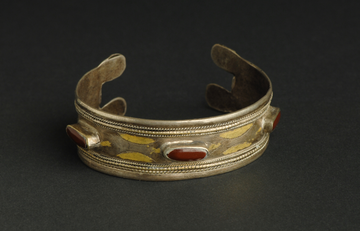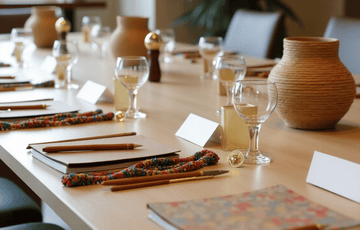Delve into the fascinating world of African brass jewelry, where history and craftsmanship intertwine. Across diverse communities in Africa, the art of brass working has flourished, leaving a lasting cultural legacy. These intricate adornments reflect the stories, traditions, and artistic brilliance of different African societies.
Brass Working Communities
From the renowned Benin Kingdom in Nigeria to the Dogon people of Mali, numerous communities across Africa have mastered the art of brass working. The skilled craftsmen of the Benin Kingdom were celebrated for their elaborate brass plaques, while the Dogon people created intricate brass jewelry with symbolic motifs. Other notable brass working communities include the Bamum people of Cameroon and the Ashanti in Ghana, each contributing their unique styles and techniques.


image collage of Ceremonial Brass Basin(Cameroon), King &Queen Sculptures(Benin), Woman Sculpture (Ghana)
Source:https://collection.nam.ac.ck, https://metmuseum.org, https://commons.wikimedia.org
Historical Significance
Brass has held cultural significance in African communities for centuries. In the Benin Kingdom, brass plaques adorned royal palaces, depicting historical events and honoring ancestors. Among the Yoruba people, brass crowns and staff symbolized the power and authority of rulers. In each community, brass jewelry served as a visual language, conveying social status, spirituality, and cultural identity.
Craftsmanship and Symbolism
African brass jewelry is a testament to the exceptional craftsmanship of artisans. Intricate filigree work, casting, and embossing techniques bring the designs to life. The symbolism within these pieces is profound, with motifs representing fertility, protection, ancestral spirits, and cultural narratives. For example, the Adinkra symbols of the Akan people in Ghana, often depicted in brass jewelry, hold deep meaning and convey messages of wisdom and unity.

craftspeople casting brass.
Source:news.artnet.com
Cultural Diversity and Adaptation
The diversity of African cultures is reflected in the styles and designs of brass jewelry. From the Tuareg people of North Africa with their distinctive geometric patterns to the Senufo of Ivory Coast, known for their bold and abstract forms, each community brings its unique artistic expression to brass working. Moreover, brass jewelry has adapted to changing times, incorporating contemporary elements while preserving cultural traditions.

An ancient Tuareq brass bangle ,a Tanzanian woman with Brass Necklace.
Source:flickr.com
Preserving Heritage
As custodians of cultural heritage, African artisans play a vital role in keeping the art of brass working alive. Through the transference of skills from one generation to the next, they safeguard traditional techniques and ensure the continuation of this rich heritage. Their dedication and passion allow future generations to appreciate and connect with the cultural significance of African brass jewelry.
Conclusion
African brass jewelry is an embodiment of history, artistry, and cultural significance. From the masterful craftsmanship of brass working communities to the symbolic motifs that adorn these treasures, they serve as a visual representation of Africa's diverse cultures. By celebrating and preserving the legacy of brass jewelry, we honor the creativity, resilience, and cultural narratives embedded within these remarkable pieces.
Explore our collection of brass craftsmanship






